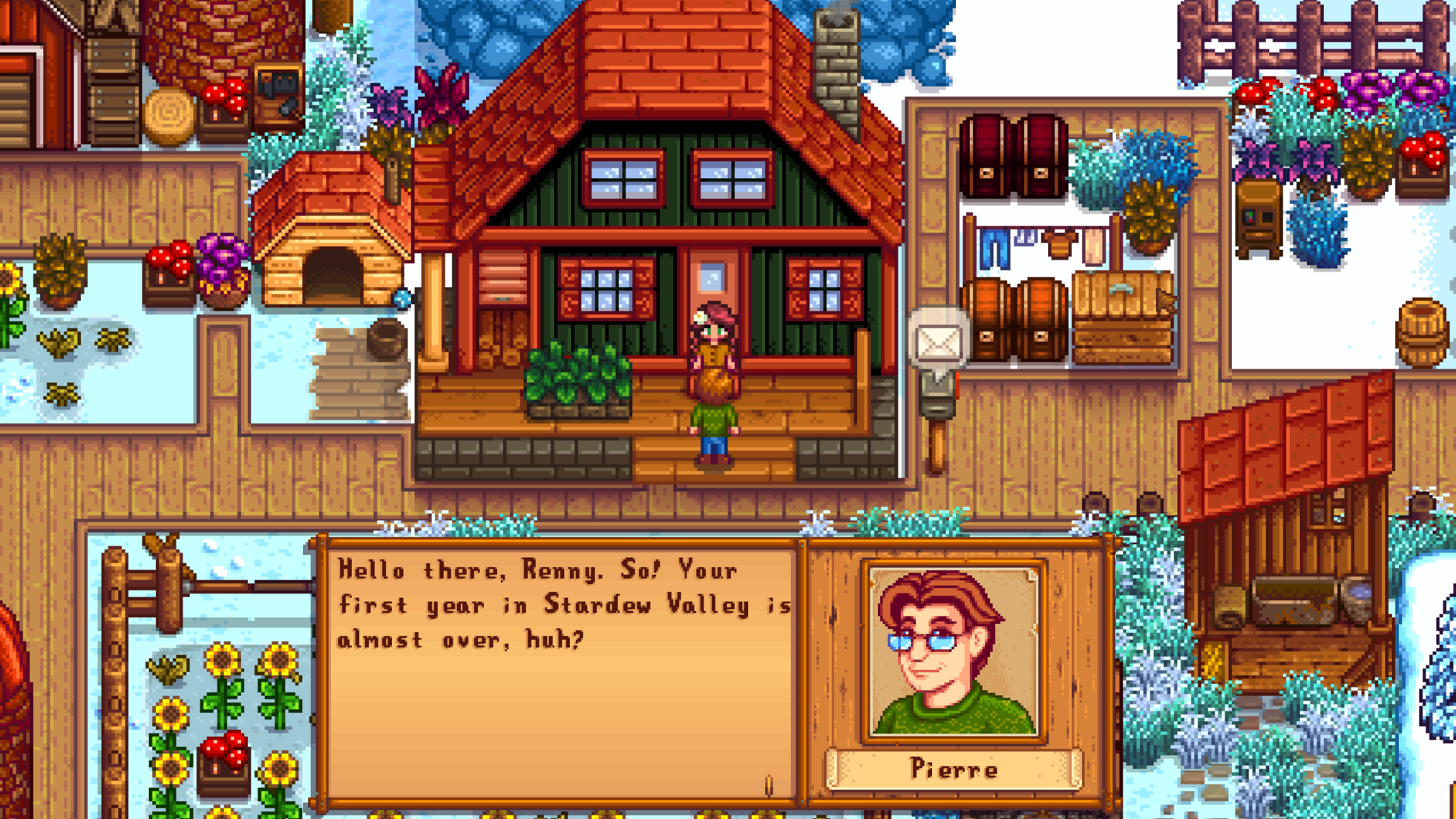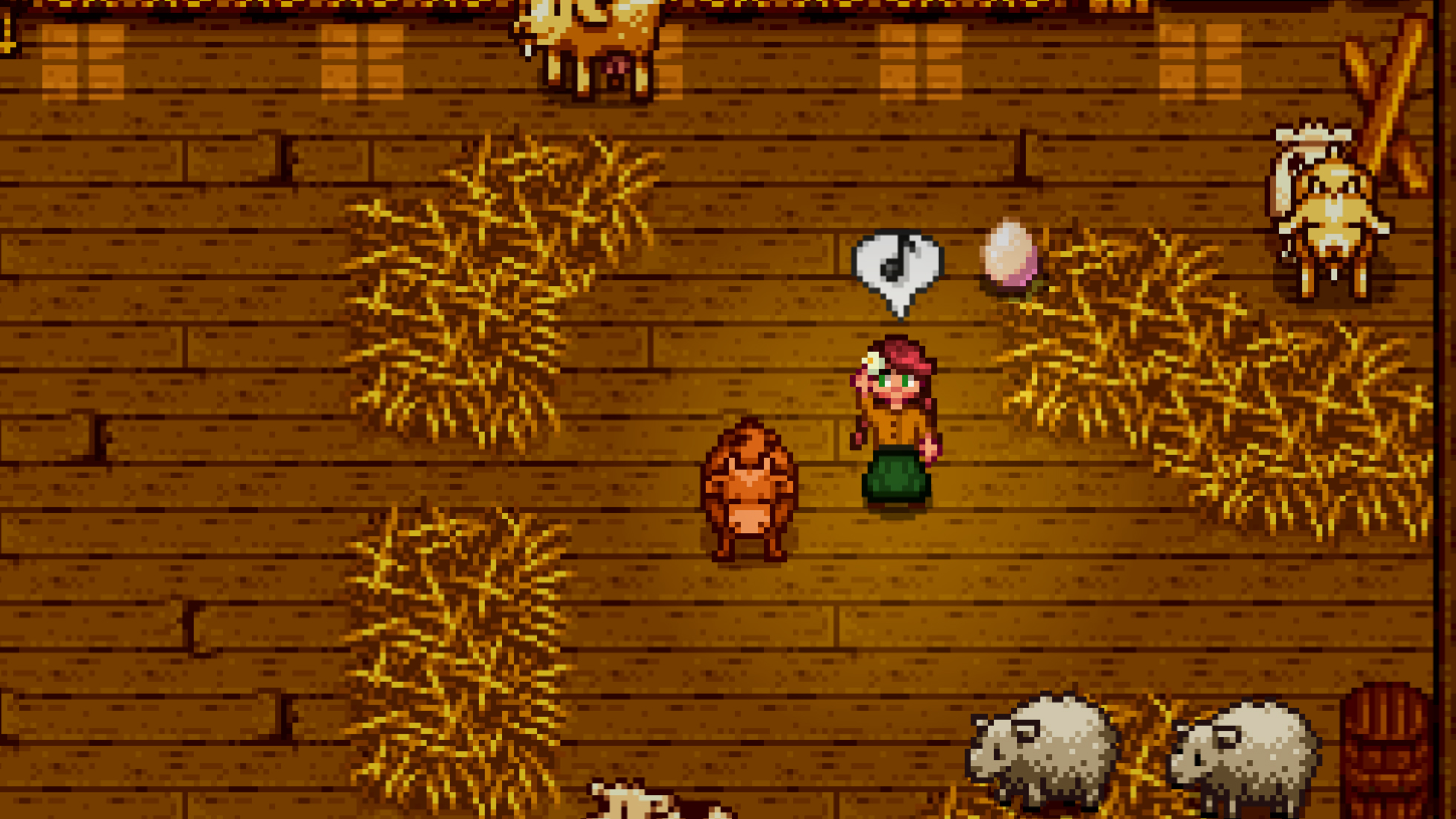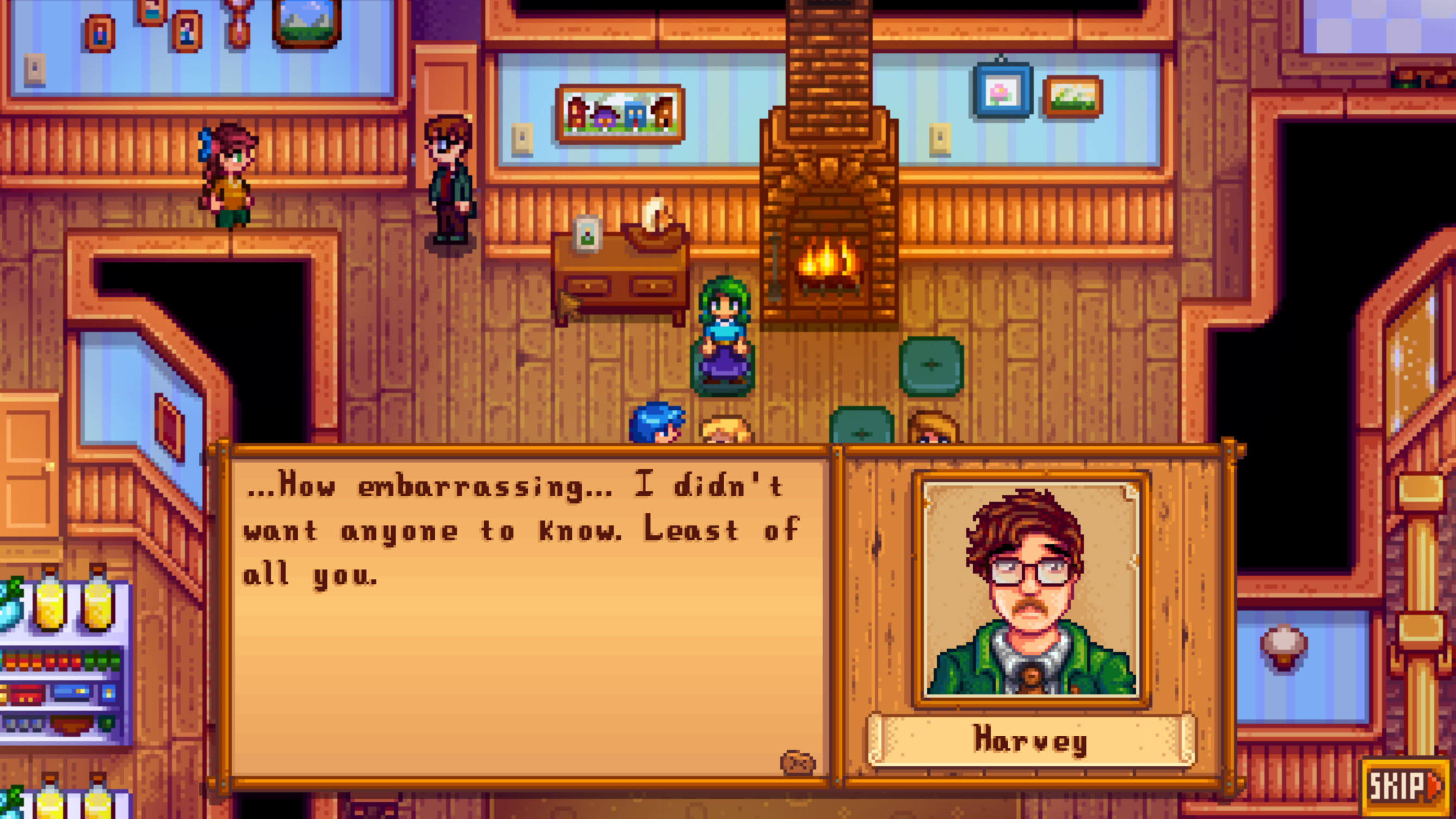When I was a little thing, I spent most summers at my grandmother’s old, overgrown farm in the middle of nowhere Mississippi. Without fail, at some point in each visit, I’d find myself in her kitchen as she equipped me with a small, dinky spoon and shoddy bucket. My task? Dig up a field of red potatoes with that spoon—yes, a spoon—and drag the bucket back and forth to her house to drop off my potato haul.
To this day I still wonder why this woman had me out there digging with a spoon, and can’t help but think surely there had to be a better way to harvest those dang potatoes.
I’d like to think that’s where I have a little commonality with Stardew Valley or really any sim game. They’re the perfect setup for a constant cycle of reevaluation, testing, execution, rinse and repeat. My ever-present monologue of “There’s got to be a better way of doing this” keeps insisting I can find and perfect the smallest flaws. Judging from version 1.6 and the more recent version 1.6.9, creator Eric Barone is just as cognizant of those little nuances, too. He’s launched two sizeable patches this year, with the first adding to all corners of Pelican Town, but it’s the second I’m far more smitten with, as gaining access to once-mod-exclusive cheats has singlehandedly beckoned me back to the farm.
Mods away
In pre-1.6 farming life, “cheating” in vanilla Stardew Valley was limited to a handful of glitches and exploits that took way too much time and effort to recreate. There was no simple, in-game approach like typing “rosebud” or “kaching” in The Sims. You needed third-party tools, like SMAPI, to gain access to debug commands. It’s not the most complicated process, but hey, it’s extra tedium, and I can’t be left alone with unthrottled access to Nexus Mods. I know myself, and the temptation to download more than just SMAPI is far too powerful. It’s a curse, really.
Admittedly my farms are a mess, and I’ve spent years learning I simply cannot be normal about modding games. It’s either vanilla all the way, baby, or I’m partitioning off 500 GB exclusively for video]game hairstyles and writing a dissertation on a single grass texture. There is absolutely no in-between. I’ll spend a week downloading, organizing, and installing fanmade goodies before seeing beyond a loading screen. As you can imagine, after years of doing this with games like Stardew Valley and The Sims, I’ll occasionally burn myself out and miss a few updates.
So to avoid an If You Give a Moose a Muffin-style spiral I swore off most modding when Stardew 1.6 dropped in March and downloaded SMAPI strictly for more building materials, a little extra cash, and some additional storage space. I bootstrapped my way to Winter Year One before caving, crafting some hellish amalgamation of every mod known to mankind, and abandoning my farm. The mess ended my 1.6 journey there, but November’s patch 1.6.9 follow-up offered a second alternative: I can finally cheat the good old-fashioned way, axing the extra programs and relying solely on built-in features. All I have to do is edit a single line of my save in Notepad, and then I’m off to create a console command-driven utopia in an otherwise vanilla valley.
In the weeds

I removed every trace of a modding framework for my most recent Stardew run, eager to test the new console commands and see if they truly worked on their own. Every cheat I’d hoped would work wound up just fine in the vanilla game, and I haven’t missed my old toys much. An unintended consequence, certainly, but Barone’s latest update spares me long nights of downloading the most bizarre (but still very cool) fanmade changes like this Slightly Hotter Wizard portrait or this Persona 3 Theodre mod that transforms Elliott. Logically, I know those things are still out there, but I don’t go browsing with SMAPI in a modding fugue. Instead, I pop “/money 900,000” into the game’s console like a civilized person and move along with my life.
It’s nice to rein in my more excessive habits and enjoy Stardew Valley in its original presentation, or at least as close to the experience as I’ll get while leaning on a few cheats. I’m of the belief artists sometimes just get lucky, unaware of what makes their work special and unable to replicate that formula, but that’s simply not the case here. Barone’s got a clear vision for the valley, and giving that a chance to breathe on its own has certainly rekindled my love for Pelican Town and its villagers.
Sure, I’m cheating my way along, but adding a built-in mechanism for those commands gives me a tamed version of the game and I’m thankful for that. It’s easy to stop at free backpack upgrades, tools, and some pocket change when that’s all I have immediate access to. It keeps me in touch with the language friends speak in multiplayer sessions, and less confused about how those experiences relate moment to moment.
Upgrading the farm

That simplicity spills over in other ways, too. Without a list of mods to transfer over, but still maintaining a farm brimming with building resources and gold, I’m far more eager to play Stardew Valley on my ROG Ally. I could play with mods beforebut anything asking me to hook up a mouse or tap a 7-inch display to install third-party tools absolutely meets the “way too tedious” criteria.
Typing out cheats on the handheld would be annoying, too, but instead I quickly fire off whatever commands I want on my desktop, save, upload that to my Steam Cloud, and then lay around with the Ally building and planting. It’s the perfect life sim for the little device, but only if my options do not require interfacing with it as an actual PC.
Beyond all the time I’m now saving, Stardew was in serious need of improved shortcuts to its debug commands, and could still use a few changes. Asking players to edit a file in Notepad goes a bit too far, leaving more room for user error when something like an in-game menu circumvents that obstacle. I’m still looking for that better way, even if editing a text file isn’t nearly as frustrating as being given a spoon for potato harvesting.

The feature-loaded update from March dwarfs this month’s 1.6.9 follow-up, but don’t skim over the patch notes if you love Stardew. Perhaps there’s nothing to wow you in the same ways as, say, dogs wearing hats and more multi-day festivals, but the update is certainly no dinky spoon—it’s better compared to more practical technology, like a really nice garden fork or a trowel.
That’s a recommendation, by the way. Stardew Valley is all about upgrading and iterating on your toolkit, and I’ll be damned if I abandon another farm to a self-inflicted modding mess. The game’s given me all the upgrades, I’ve just got to keep on using them.
Source link











Add comment